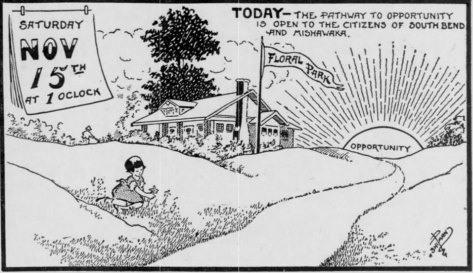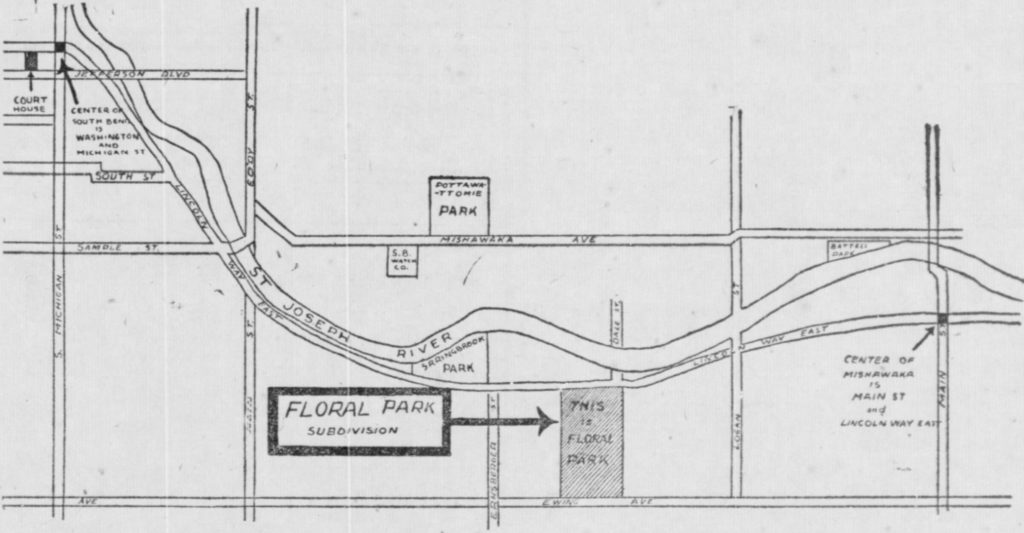Land for Sale: 1900s - 1920s
From early on, Floral Park was advertised as having the most modern of amenities: sewer, city water, electric lights, gas, and a paved boulevard (Milburn Boulevard). Later advertisements touted community wells with inexhaustible sources of clean water that would be “free for all.” Adding to its appeal, the north side of the development was also near the “Shady Old St. Joe River.”
In 1912, part of the northern end of Floral Park (between West Second Street, or Lincolnway, and the New York Central Railroad tracks) was initially advertised as “a beautiful, shady, restricted residential district.” While some lots were sold and during this period, a hiatus came during the First World War. After the war, property sales resumed, and developers again used bombastic language to entice buyers. Lots in Floral Park were “beautiful home sites” set at “pre-war prices,” and they were situated “at the foot of the picturesque Mishawaka Hills.”
Importantly, these new developments were adjacent to the South Side Streetcar Line, which was conveniently situated on Second Street (Lincolnway). This was the main electric interurban line that traveled between Mishawaka and South Bend. Transit access was crucial, as these developments were a significant walking distance from the industrial hubs of both downtowns. Land developers communicated in grandiose terms about the advantages of living midway between “two great world famed manufacturing cities – that are rapidly growing together.” Denizens could be whisked to their place of employment in a short seven minutes. Today, one will note that some of the oldest homes in the neighborhood are those that are furthest to the north. These are the residences that sit closest to Lincolnway, where the South Side Streetcar once traveled.


